REEL RETRO CINEMA: New looks at old flicks and their comic-book connections…

—
By ROB KELLY
In the massive wake of Star Wars, movie studios were greenlight(saber)ing every sci-fi/fantasy they film they could, all with hopes that lightning would strike again and they would have their very own franchise that could run for multiple installments and be spun-off into a merchandising juggernaut. Take a quick look at the genre films from this decade and you’ll see the road is littered with Franchises That Never Were: The Last Starfighter. Dune. Spacehunter: Adventures in the Forbidden Zone. Dragonslayer. And, yes, 1983’s Krull.
Since Krull is celebrating its 35th anniversary this year, I thought it would be fun to go back and revisit the film. I guess I shouldn’t say “revisit” because, for whatever reason, I never managed to see Krull during its original theatrical run or even on cable TV. I’m not sure how that happened (I made my Dad take me to everything back then), but it was always one of those movies that I had heard mostly negative things about. Since I had no childhood fondness for it, I figured it probably wasn’t worth a watch as a (hollow laugh) full-grown adult. But one quiet Sunday afternoon, I decided to give it a chance.

Krull is directed by Peter Yates, who came to the project with quite the film pedigree: Bullitt, Breaking Away, The Hot Rock and The Friends of Eddie Coyle are just a few of the classics (or near classics) he had helmed before taking on the big budget sci-fi fantasy challenge of a film like this. It stars the charismically challenged Ken Marshall as our hero, Colwyn (news to me: Krull is not the name of the main character!) who is destined to marry a queen, Lyssa, (played by the pretty but equally bland Lysette Anthony). Their marriage will produce a son who will “rule the galaxy.”
The only thing getting in the way of all this bliss is the Beast (“That’s just a placeholder name, will come up with something better before we start shooting”—screenwriter Stanford Sherman, surely) who, with his evil band of soldiers called the Slayers, travels the galaxy in a mountain-like spaceship called the Black Fortress, which is unassailably cool.

Before Colwyn and Lyssa can be formally wed, the Slayers arrive on the planet Krull (ah, there it is) and attack. They kill the kings of both realms, and kidnap Lyssa. Looks like it’s time for someone to go on a Hero’s Journey!
Colwyn, while blubbering like a little kid with a skinned knee, is nursed back to health by Ynyr, the Old One (Freddie Jones), who tells him that with the help of a magical artifact known as the Glaive, Colwyn can defeat the Beast and rescue Lyssa. The only tricky part is, the Beast’s Black Fortress keeps moving—it literally teleports to a new location every day.
Nevertheless, Colwyn, Ynyr and a band of brigands and criminals (including an honest-to-gosh cyclops), form a search party and head out. Colwyn risks his life to retrieve the Glaive, a five-pointed weapon that acts like Thor’s hammer of Mjolnir: you throw it, it breaks a lot of stuff, then comes back to you.
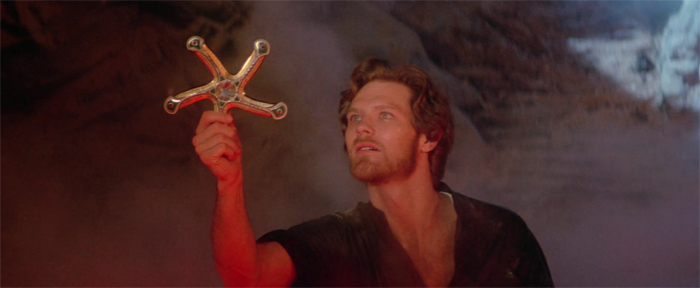
The main section of Krull is a video game-esque journey where Colywn and his group have to travel from place to place to learn where the Black Fortress will be the next day, picking up artifacts along the way. Locations include a slimy mud hole that is safe from the Beast’s magic, a village where a woman tries (and fails) to seduce Colwyn, and a cave covered in a giant web spun by a mammoth crystal spider, a stop-motion creation Ray Harryhausen would have been proud of. Also residing in the spider’s lair is the Widow of the Web (Francesca Annis) who gives her former lover Ynyr a magical hourglass that reveals where the Black Fortress will be before it gets there.
After securing some Fire Mares, Colwyn and what’s left of the group (a bunch of them get killed along the way) reach the Black Fortress. Colwyn sinks the Glaive into the Beast and finds Lyssa. Lyssa explains that only by finishing their wedding vows will they have enough magical power to defeat the Beast.
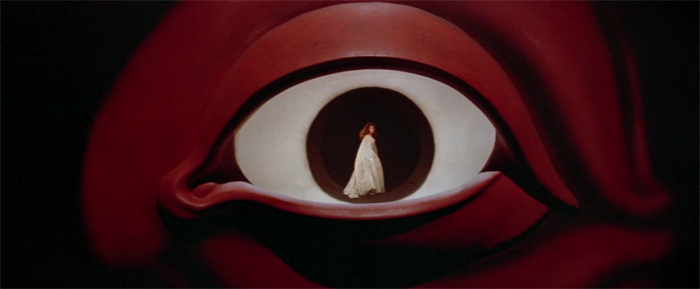
So, after they get hitched, their combined power indeed kills the villain, which leads the Black Fortress to crumble in on itself. Krull ends with Colwyn and Lyssa, now wed, ready to fulfill the prophecy we heard at the start, that their son will rule and bring peace to the galaxy. The End.
I will admit, right off the bat, that I enjoyed Krull way more than I thought I would. The opening scenes are confusing as hell, as we’re introduced to a bunch of characters that all know each other already and exchange a lot of magical folderol that doesn’t make a lick of sense. I get the sense that Ken Marshall and Lysette Anythony were picked as the main characters mostly because they looked the part, but they are pretty much empty vessels.
Unlike Mark Hamill, Carrie Fisher and Harrison Ford, who each put a distinctive spin on George Lucas’ sometimes clunky dialogue, Marshall and Anthony don’t really fill the vast spaces they’re in, leaving the movie with a giant hole in its center. I think it’s also a problem that our proposed heroes will, if they accomplish their mission, rule us all. It’s always easier to root for scrappy rebels looking to topple power structures. In Krull, we’re essentially being asked to root for the One Percent, and we just have to trust they are good, benevolent rulers. How often does that work out?
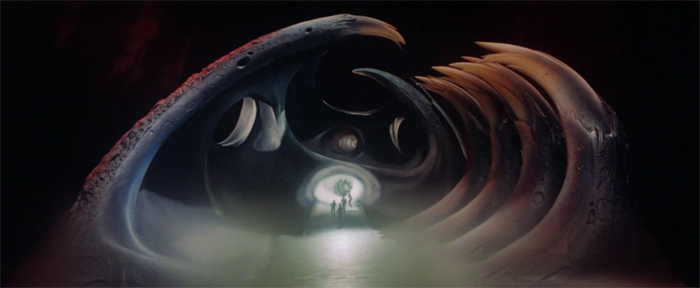
But, putting all that aside, Peter Yates and his production team really conjure up some amazing, almost phantasmagoric settings for our characters to play in — from the Black Fortress (whose interiors remind me a lot of the pre-production work done for Alejandro Jodorowsky’s aborted Dune movie), to the magic swamp, to the crystal web with its creepy giant spider.
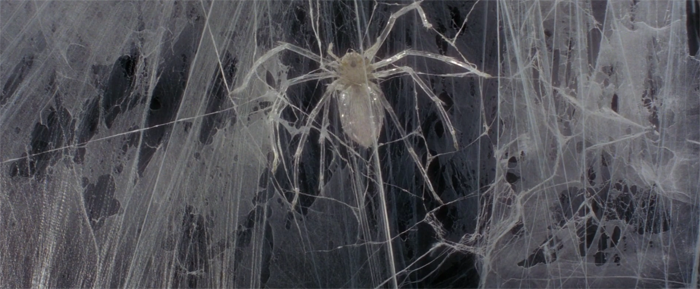
Krull also features some fairly gory, ghoulish touches that I really enjoyed: One character’s body starts convulsing and falling apart like something from a David Cronenberg film, and when a Slayer is killed, we see that their imposing black metal armor isn’t filled with a person, but some sort of slimy, tentacled creature that slithers out of the helmet and disappears by burrowing a hole in the ground. And unlike stormtroopers, who just fall over comically when hit, the Slayers emit a high-pitched scream that is discordant and just plain weird.
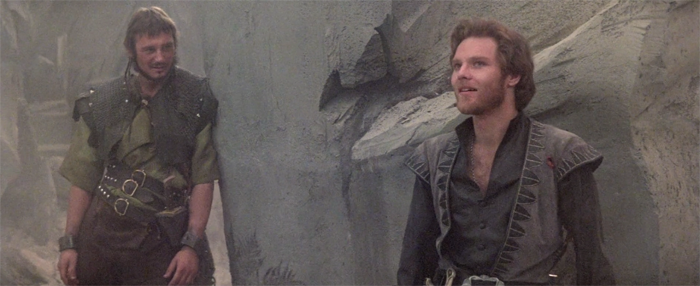
Neeson and Marshall
With some fun supporting turns by actors Alun Armstrong, Robbie Coltrane and a young Liam Neeson (who is so effortlessly charming in a small role you wonder why he isn’t Colywn), Krull has enough really engaging material on its margins that it almost makes up for it’s A to B to C plot and its dull-as-dishwater leads. Also quite good is the score by James Horner (who borrows a lot from his previous score to Star Trek II: The Wrath of Khan). All in all, you can sort of see why everyone involved thought they just might have another Star Wars–size hit on their hands.
One of those everyones was Marvel Comics, who adapted the movie in Marvel Super Special #28, as well as in a concurrent two-issue mini-series by David Michelinie (who wrote the Star Wars comic for the House of Ideas) and the oil-and-water art team of Bret Blevins and Vince Colletta.
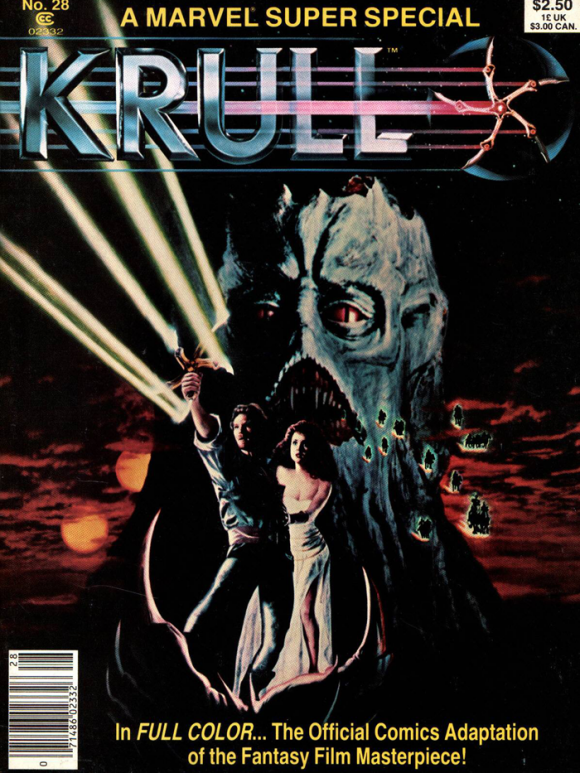
Blevins, with his loose, fanciful drawing style, was a perfect choice to adapt Krull into comic form, and he does some fine work here. If anything, the Marvel version plays down some of the gorier, violent parts of the movie that I thought helped give it some of the edge that set it apart from the other films whose success Krull was trying to replicate.
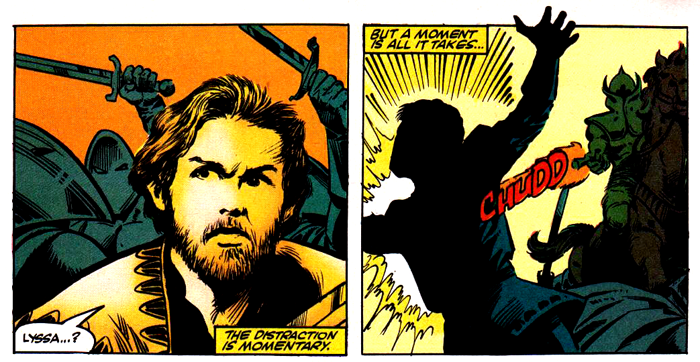
This version would be perfect for younger kids just getting into fantasy, and it ends in a much more satisfying, sum-it-all-up way than the dull long shot that plays over the end credits of the finished film.
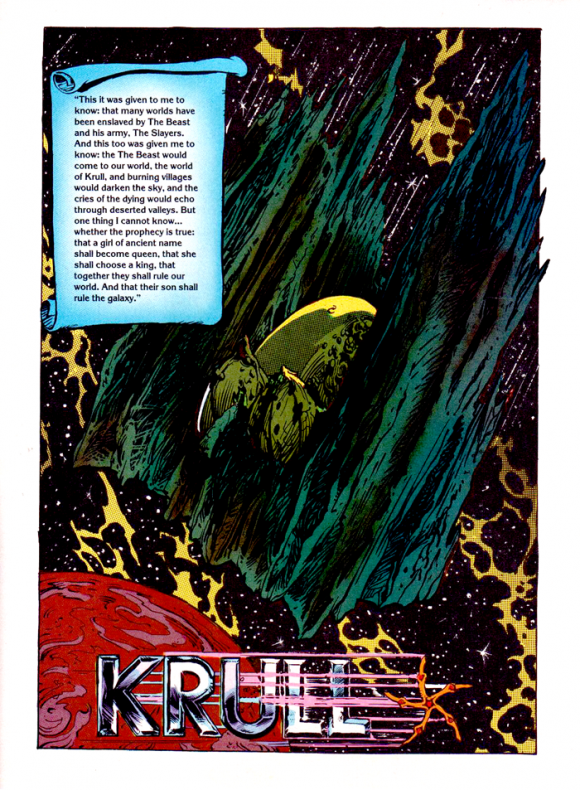
The magazine also features a subtly self-mocking article about living a “Krull lifestyle,” talking about all the various Krull-branded products you can buy, from puzzles to sleeping bags to Presto Magix sets and pinball games. I don’t think much of this stuff was ever made (though the pinball game was, and it looks really cool), but it’s clear that the studio and its licensors were at the ready in case Krull took off like a rocket. I, for one, would have loved a Krull action figure line and Black Fortress playset or, at the very least, a plastic Glaive to throw around!
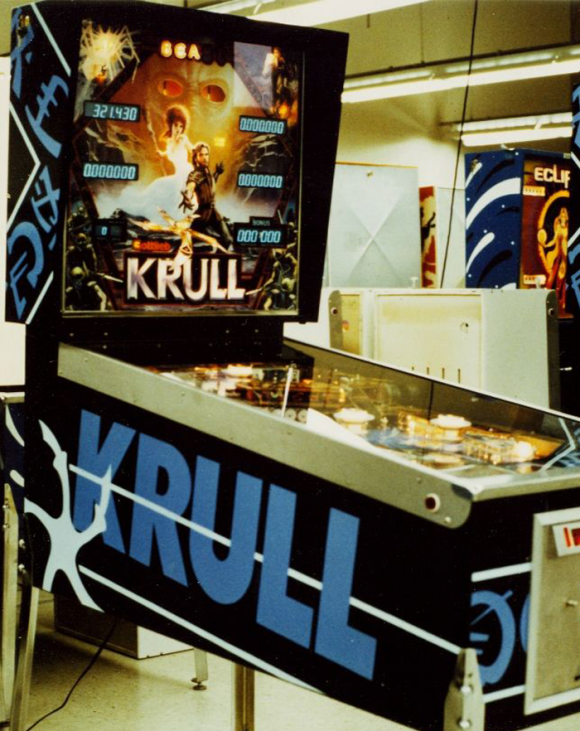
Like a lot of movies from the 1970s and ’80s, Krull has now developed a bit of a cult following. It’s been released on every home video format available, making it to Blu-ray a few years ago. Unlike a lot of movies from that time, I have yet to hear of any plans to remake/reimagine/reboot Krull. But the Glaive did show up in Steven Spielberg’s Ready Player One, so it’s clear a lot of the current movers and shakers in Hollywood hold Krull in a special place in their hearts. Now I wish I hadn’t waited 35 years to watch it!
—
Rob Kelly is a writer/artist/comics and film historian. He is the host or co-host of several shows on The Fire and Water Podcast Network, including Aquaman and Firestorm: The Fire and Water Podcast, The Film and Water Podcast, TreasuryCast, Superman Movie Minute, MASHCast and Pod Dylan.

October 17, 2018
I have always loved this movie. It had a great blend of Star Wars and Dungeons and Dragons, two of my favorite things during that era of my life. There isn’t much out there to collect to relive the movie. All the shortcomings you list are probably fair but I look back on this movie with great nostalgia. And too, I’m a sucker for practical effects.
October 17, 2018
I’m right behind you, Rob, since I’ve never seen it either, somehow! I’m not exactly sure how that happened, as my friends and I watched pretty much everything back then, good or bad rap didn’t matter!
October 19, 2018
THE PINBALL MACINE WAS NEVER ACTUALY MADE.JUST THE ARACE GAME..WAT Y SEE HERE IT MERELY A PROTOTIPE.